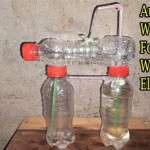Best Plants For Outdoor Pots In Florida
Florida's unique climate presents both opportunities and challenges for container gardening. The state's subtropical environment, characterized by high humidity, intense sunlight, and warm temperatures year-round, dictates specific plant choices that will thrive in outdoor pots. Selecting plants adaptable to these conditions is crucial for creating vibrant and sustainable container gardens.
This article will provide a comprehensive guide to the best plants for outdoor pots in Florida, categorizing them based on their sun requirements and maintenance needs. Understanding these factors will allow gardeners to make informed decisions and cultivate flourishing potted arrangements.
Selecting Plants Based on Sunlight Exposure
Sunlight is a primary factor influencing plant growth and flowering. Before choosing plants for outdoor pots, it is essential to assess the amount of sunlight the area receives. Locations are generally categorized as full sun (at least six hours of direct sunlight daily), partial sun (four to six hours of direct sunlight), and shade (less than four hours of direct sunlight or dappled light throughout the day).
Full Sun Plants: These plants require abundant sunlight to produce energy through photosynthesis. They are well-suited for areas that receive direct sunlight for a significant portion of the day. Examples suitable for Florida include:
Hibiscus (Hibiscus rosa-sinensis): Hibiscus plants are known for their flamboyant, trumpet-shaped flowers that come in a wide range of colors. They thrive in full sun and well-ddraining soil. Regular watering is essential, especially during the hotter months. Fertilizing monthly with a balanced fertilizer promotes abundant blooming. Pruning regularly helps maintain shape and encourages new growth. Hibiscus is susceptible to aphids and spider mites, so consistent monitoring and treatment are necessary.
Bougainvillea (Bougainvillea glabra): Bougainvillea is a vine celebrated for its colorful bracts (modified leaves) that surround small, inconspicuous flowers. It requires full sun to bloom profusely. Bougainvillea prefers well-draining soil and can tolerate drought conditions once established. Overwatering can lead to root rot. Pruning is necessary to control its size and shape. This plant is relatively pest-resistant but can occasionally be affected by aphids or scale.
Lantana (Lantana camara): Lantana is a heat-tolerant, flowering shrub that produces clusters of small, brightly colored flowers. It thrives in full sun and well-draining soil. Lantana is drought-tolerant once established and attracts butterflies and other pollinators. Regular deadheading promotes continuous blooming. It is generally pest-resistant but can be susceptible to spider mites in dry conditions. Note that some varieties are considered invasive in certain regions.
Pentas (Pentas lanceolata): Pentas are heat-loving plants that produce star-shaped flowers in clusters. They thrive in full sun to partial sun and well-draining soil. Pentas attract butterflies and hummingbirds. Regular deadheading promotes continuous blooming. They require moderate watering and fertilization. Pentas are relatively pest-resistant but can be affected by aphids or whiteflies.
Partial Sun Plants: These plants prefer indirect sunlight or filtered sunlight for part of the day. They are suitable for areas that receive morning sun and afternoon shade or dappled sunlight throughout the day. Examples suitable for Florida include:
Impatiens (Impatiens walleriana): Impatiens are popular flowering plants known for their vibrant colors and continuous blooms. They thrive in partial sun to shade and require consistently moist soil. Impatiens are susceptible to downy mildew, so proper air circulation and watering practices are crucial. Avoid overhead watering to prevent fungal diseases. Regular fertilization promotes abundant blooming.
Coleus (Plectranthus scutellarioides): Coleus are grown for their colorful and patterned foliage. They thrive in partial sun to shade and well-draining soil. Coleus come in a wide variety of colors and leaf shapes. Pinching back the tips encourages bushier growth. They require moderate watering and fertilization. Coleus are relatively pest-resistant but can be susceptible to mealybugs.
Caladium (Caladium × hortulanum): Caladiums are grown for their colorful, heart-shaped leaves. They thrive in partial sun to shade and require consistently moist soil. Caladiums come in a wide variety of colors and patterns. They are sensitive to cold temperatures and should be protected from frost. Fertilizing regularly promotes vibrant foliage. Slugs and snails can be a problem, so implement appropriate control measures.
Begonias (Begonia spp.): Begonias are a diverse group of plants that offer a wide range of foliage and flower colors. They thrive in partial sun to shade and well-draining soil. Different types of begonias have varying needs, so it's important to choose varieties suitable for Florida's climate. Regular deadheading promotes continuous blooming. Begonias are relatively pest-resistant but can be affected by mealybugs or powdery mildew.
Shade Plants: These plants require minimal direct sunlight and thrive in shaded areas. They are suitable for locations under trees, patios, or in areas that receive only morning sun. Examples suitable for Florida include:
Ferns (Various species): Ferns are adaptable plants that thrive in shade and consistently moist soil. They add a lush, green texture to container gardens. Different types of ferns have varying needs, so choose varieties suitable for Florida's climate. Regular watering is essential to prevent the soil from drying out. Ferns are relatively pest-resistant but can be affected by scale or mealybugs.
Hostas (Hosta spp.): Hostas are known for their attractive foliage and shade tolerance. They thrive in consistently moist soil and dappled sunlight. Hostas come in a wide variety of leaf sizes, shapes, and colors. Slugs and snails are a common problem, so implement appropriate control measures. Fertilizing regularly promotes healthy foliage growth.
Peace Lily (Spathiphyllum wallisii): Peace lilies are popular indoor plants that can also thrive in shaded outdoor locations in Florida. They prefer consistently moist soil and high humidity. Peace lilies produce elegant white flowers. Avoid direct sunlight, as it can scorch the leaves. Fertilizing occasionally promotes flowering. Peace lilies are relatively pest-resistant but can be affected by spider mites.
Bromeliads (Various species): Bromeliads are tropical plants that thrive in shade and well-draining soil. Many bromeliads are epiphytic, meaning they can grow on other plants without harming them. They add a unique texture and color to container gardens. Water the central cup of the bromeliad to provide adequate moisture. Bromeliads are relatively pest-resistant but can be affected by scale or mealybugs.
Considering Maintenance Requirements
Plant maintenance is an essential aspect of container gardening. Different plants have varying needs for watering, fertilization, pruning, and pest control. Understanding these requirements is vital for ensuring the health and longevity of potted plants.
Watering Needs: Florida's climate is characterized by high humidity and frequent rainfall, but container plants can dry out quickly, especially during the hotter months. Regular watering is crucial, and the frequency will depend on the plant species, the size of the pot, and the weather conditions. Plants should be watered when the top inch of soil feels dry to the touch. Overwatering can lead to root rot, so ensure that the pots have adequate drainage.
Fertilization: Container plants rely on the gardener to provide essential nutrients. Fertilizing regularly promotes healthy growth and abundant blooming. Use a balanced fertilizer formulated for flowering plants. Follow the instructions on the fertilizer label for application rates and frequency. Slow-release fertilizers can be a convenient option for providing a steady supply of nutrients.
Pruning and Deadheading: Pruning is necessary to maintain the shape and size of plants. Regular pruning encourages new growth and prevents plants from becoming leggy. Deadheading involves removing spent flowers, which promotes continuous blooming. Use clean, sharp pruning tools to avoid spreading diseases. Pruning should be done according to the specific needs of each plant species.
Pest and Disease Control: Florida's warm and humid climate can create favorable conditions for pests and diseases. Regular monitoring of plants is essential for detecting any signs of infestation or infection. Common pests include aphids, spider mites, mealybugs, and whiteflies. Diseases such as powdery mildew and root rot can also affect container plants. Use appropriate insecticides or fungicides to control pests and diseases. Preventative measures, such as providing good air circulation and avoiding overwatering, can help minimize problems.
Choosing the Right Potting Mix
The potting mix used in container gardens is crucial for plant health. Unlike garden soil, potting mix is a soilless medium specifically formulated for container gardening. It provides good drainage, aeration, and nutrient retention.
Characteristics of a Good Potting Mix: A good potting mix should be lightweight, well-draining, and nutrient-rich. It should contain a blend of ingredients such as peat moss, perlite, vermiculite, and compost. Peat moss helps retain moisture, while perlite and vermiculite improve drainage and aeration. Compost provides essential nutrients.
Avoiding Garden Soil: Garden soil should not be used in containers, as it tends to compact and does not provide adequate drainage or aeration. Compacted soil can suffocate roots and lead to plant failure.
Adjusting the Potting Mix: Depending on the plant species, the potting mix may need to be adjusted. For plants that prefer well-draining soil, such as succulents and cacti, add more perlite or sand to the potting mix. For plants that prefer moist soil, such as impatiens and ferns, add more peat moss or vermiculite.
Repotting: Over time, the potting mix in containers can become depleted of nutrients and compacted. Repotting plants every one to two years with fresh potting mix can revitalize them and promote healthy growth. Choose a pot that is slightly larger than the previous one. When repotting, gently loosen the roots and remove any dead or diseased roots.

Great Plants For Patio And Pool Side Containers Cascade Manufacturing
:strip_icc()/102004263-41bff9fff7d04880bbac446ad66ab8e2.jpg?strip=all)
Best Tropical Flowers For Your Patio

Top 20 Plants That Love Living In Pots Style Curator

The 8 Best Trailing Plants For Container Gardens Ted Lare Design Build

Heat Loving Container Plants For Hot Weather Perfect

Fall Planter Arrangements For Northeast Florida

21 Best Container Plants For Pots Outdoors Get Busy Gardening

The Potted Herb Florida Gardening Project

Add A Thrilling Porch Planter For Fall Gardening Solutions University Of Florida Institute Food And Agricultural Sciences

Best Potted Plants For Garden And Lanai
Related Posts







